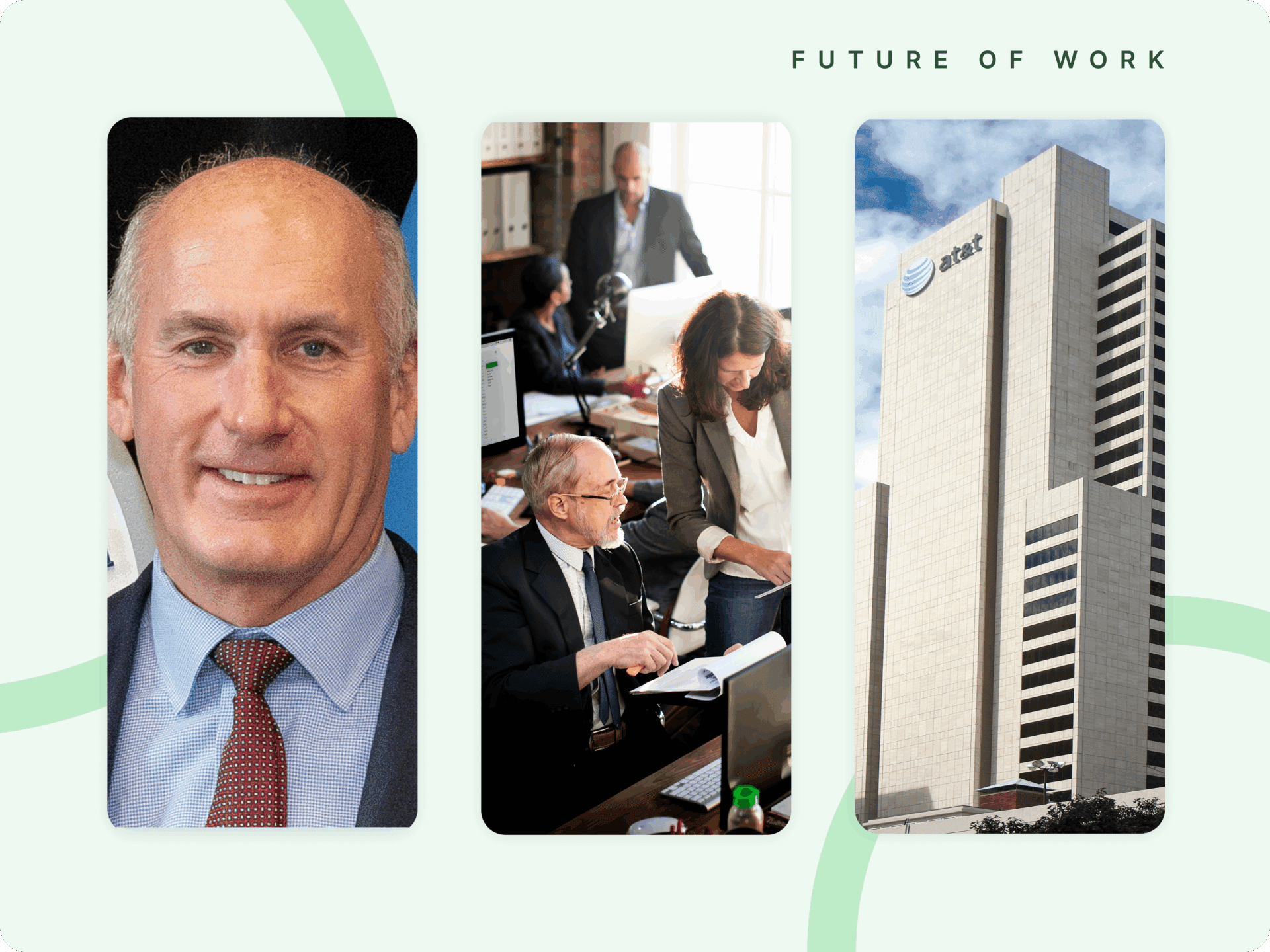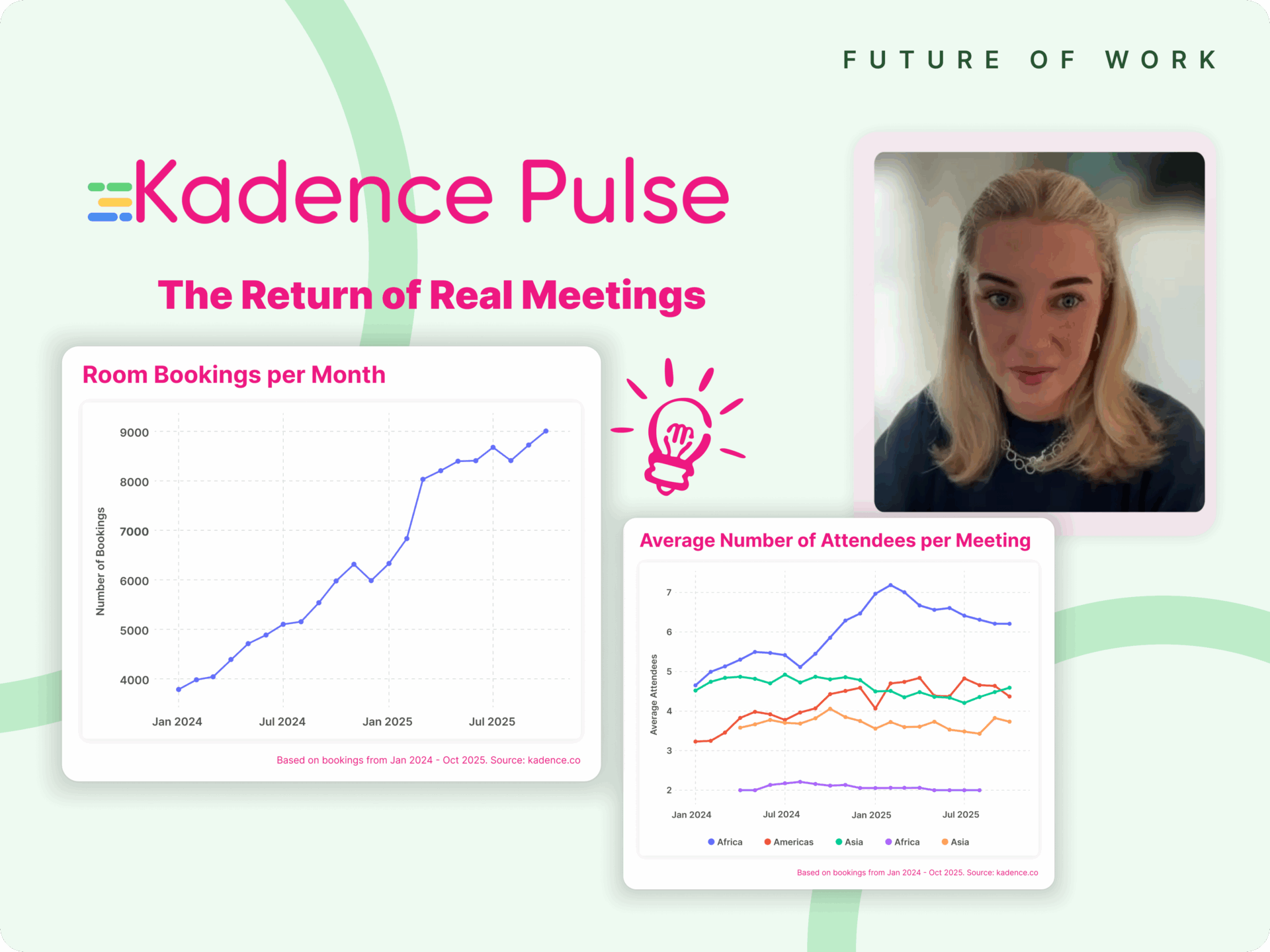The new return to office strategy at AT&T is not just about real estate. It is about reshaping the company culture from the ground up.
In a wide-ranging internal memo, CEO John Stankey responded to declining employee engagement scores by outlining a long-term shift to what he calls a “market-based culture.” The company is moving from a hybrid work model to an enforced five days in the office. That shift is already changing how people are expected to show up, contribute, and grow. And it is changing what flexibility now means at AT&T.
The message is clear. Hybrid work at AT&T is no longer a benefit. It is a filter. A way to align the workforce with a culture that prioritizes visibility, presence, and direct contribution.

Not A Space Strategy. A Culture One.
Stankey’s memo frames in-person presence not as a temporary adjustment but as a long-term operating model. He connects hub locations to improved mentorship, collaboration, and career visibility. He also connects them to deeper expectations about how employees contribute and grow.
This is less about desks and more about norms. Stankey wants to move away from what he calls “hierarchy and familial cultural norms” and toward an external, performance-driven model. That shift is framed as necessary for long-term relevance. The office is the tool. The culture is the goal.
From a leadership standpoint, the intent is transparent. But the delivery reveals a deeper tension.

Engagement Is Down. Alignment Is Up.
AT&T’s own employee survey showed that 79% felt committed and engaged with their work at AT&T. But Starkey himself admits: “While this is reassuring, especially considering the amount of change we’ve navigated as a company recently, it wasn’t a surprise to me that we fell short of our engagement goal.”
The company also fell short of its goal to be in the top third of Fortune 100 companies on this metric. That dip comes after years of structural changes, role consolidations, and a broader realignment of how work happens.
But instead of pausing to reevaluate whether flexibility could support performance and wellbeing, the response points in a different direction.
This is where the memo becomes most interesting. It acknowledges employee challenges, reinforces support for mental health and care benefits, and points to recent updates in time-off and leave structures. But at the same time, it draws a firm line around what kinds of flexibility fit within the future of AT&T. Some employees may see that as clarity. Others may see it as a narrowing of options.

There Is A Smarter Way to Align
It is not wrong to want stronger cultural cohesion or greater in-person collaboration. But there is a better way to get there.
The most effective hybrid strategies today start with data. They show how teams are actually working. They identify when presence matters most. They enable leaders to design rhythms that suit both the work and the people doing it.
Rigid return-to-office rules may boost short-term alignment. But long-term engagement comes from predictability, autonomy, and trust. Culture does not live in a building. It lives in how people show up for each other.
AT&T is building for the company it wants to be. The question is whether it is building in a way that brings employees with it.
Book a demo with us today. Explore how Kadence helps modern enterprises lower cost, boost productivity, and connect with purpose.




